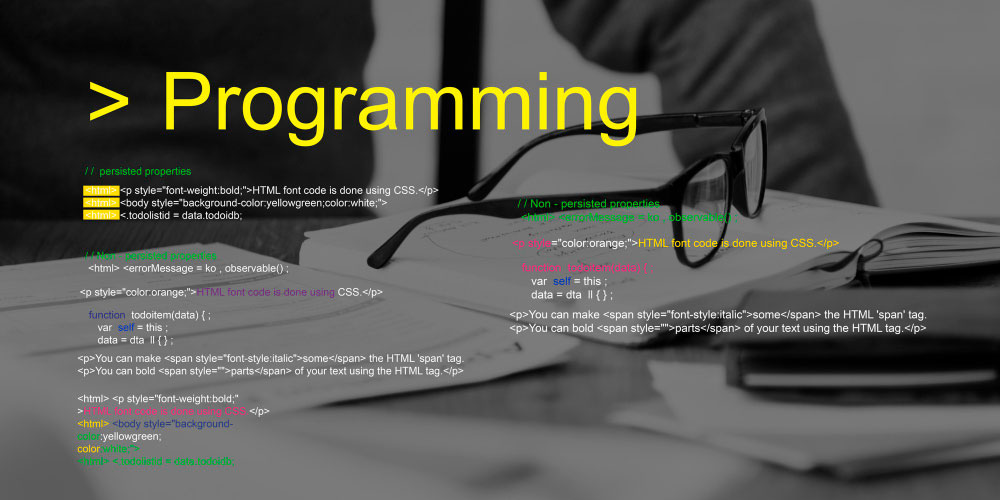Introduction
Let’s dive into the fascinating world of front-end frameworks, shall we? You’re standing at a crossroads, project ideas bubbling, and you’ve got to pick a champion: React vs Vue vs Angular. It’s a daunting choice, I know. I’ve been there, staring at the screen, a cup of lukewarm coffee beside me, wondering which path would lead to the least amount of late-night debugging and the most satisfying “aha!” moments.
The Front-End Framework Arena: A Personal Journey
Before we get into the nitty-gritty, let me share something personal. Choosing a framework isn’t just about technical specs. It’s about finding a tool that resonates with your style, and your thought process. It’s like picking a musical instrument; some feel natural in your hands, others, well, they don’t click. I remember my first Angular project; it felt like trying to assemble a complex puzzle with a blindfold on. But then, React’s simplicity started to make sense, and Vue’s gentle learning curve felt like a breath of fresh air. It’s a journey of discovery, and there’s no right or wrong answer.
React: The Flexible Juggernaut
React, developed by Facebook (now Meta) [https://react.dev/], is a library, not a full-fledged framework. That’s its strength and sometimes, its weakness. It’s like having a set of incredibly versatile Lego bricks. You can build almost anything, but you’ll need to source and assemble the other pieces yourself.
Introduction to React.js
React.js is a powerful JavaScript library used for building dynamic and interactive user interfaces, especially for single-page applications (SPAs). Developed by Facebook, it follows a component-based architecture that enables developers to create reusable UI elements, making development more efficient and maintainable. One of React’s standout features is the virtual DOM, which optimizes rendering by updating only the necessary parts of the real DOM, leading to better performance. React also adopts a declarative programming style, allowing developers to describe how the UI should look based on the application’s state, making the code easier to understand and debug.
Features and Ecosystem
React has a rich ecosystem that supports various development needs. It seamlessly integrates with libraries like Redux for state management, React Router for navigation, and Next.js for server-side rendering (SSR). The introduction of hooks has simplified state and side-effect management, making it easier to work with functional components. React also offers the Context API, which helps in managing the global application state without relying on external libraries. Additionally, React Native extends its capabilities to mobile app development, allowing developers to build cross-platform applications. With strong community support, continuous updates, and extensive documentation, React remains a dominant force in modern front-end development.
- Pros:
- Massive community and ecosystem: If you run into a problem, chances are someone’s already solved it.
- Component-based architecture: Promotes reusability and maintainability.
- Virtual DOM: Improves performance by minimizing direct DOM manipulation.
- Flexibility: This can be used for everything from single-page applications to mobile apps (React Native).
- Cons:
- Steeper learning curve for beginners, especially with concepts like JSX and hooks.
- Requires more third-party libraries for routing, state management, etc.
- The flexibility can be overwhelming for people who prefer more structure.
It’s a feeling of empowerment, that’s what React gives you. But it also demands a certain level of self-sufficiency. You’re the architect, the builder, the whole crew.
Vue: The Progressive Darling
Vue [https://vuejs.org/], created by Evan You, strikes a beautiful balance between simplicity and power. It’s like that friend who’s always there to help, never overwhelming, but always capable.
Introduction to Vue.js
Vue.js is a progressive JavaScript framework used for building modern, interactive web applications. Created by Evan You, Vue is designed to be incrementally adoptable, meaning developers can integrate it into existing projects or use it to build full-featured single-page applications (SPAs). Vue’s core library focuses on the view layer, making it simple yet powerful. It utilizes a component-based architecture, where reusable components manage their own logic and UI. One of its key features is the reactive data-binding system, which ensures that the UI updates automatically when the underlying data changes. Vue’s simplicity, flexibility, and ease of integration make it a popular choice among developers.
Features and Ecosystem
Vue.js offers a rich ecosystem that includes Vue Router for handling navigation, Vuex (or Pinia) for state management, and Vue CLI for project scaffolding. Vue also supports a template-based syntax using directives like v-bind and v-if, making it easy to manipulate the DOM. With the Composition API, Vue provides better code organization and reusability, especially for large-scale applications. Vue’s lightweight nature ensures fast performance, while features like server-side rendering (SSR) with Nuxt.js enhance SEO and loading speed. Due to its approachable learning curve, strong community support, and comprehensive documentation, Vue remains a preferred framework for both beginners and experienced developers.
- Pros:
- Gentle learning curve: Easy to pick up, even for beginners.
- Clear and concise syntax: Feels intuitive and natural.
- Progressive framework: Can be integrated into existing projects incrementally.
- Excellent documentation: Makes learning and troubleshooting a breeze.
- Cons:
- Smaller community compared to React and Angular.
- May have limitations for very large and complex applications.
- A smaller community can mean fewer third-party libraries available.
Vue evokes a sense of calm, a feeling that you’re in good hands. It’s the framework you reach for when you want to focus on your application, not on wrestling with complex configurations.
Angular: The Enterprise Powerhouse
Angular [https://angular.io/], developed by Google, is a full-fledged framework with a comprehensive set of features. It’s like a well-equipped workshop, everything you need is right there.
Introduction to Angular
Angular is a powerful, full-featured TypeScript-based framework developed and maintained by Google for building dynamic web applications. Unlike libraries like React and Vue, Angular is a complete framework that includes everything needed for front-end development, such as built-in routing, state management, and form handling. It follows a component-based architecture, where reusable components encapsulate UI logic and styles, making applications modular and maintainable. One of Angular’s standout features is its two-way data binding, which synchronizes the model and view automatically, reducing the need for manual updates. With a strong emphasis on scalability and maintainability, Angular is widely used for enterprise-level applications.
Features and Ecosystem
Angular comes with a rich ecosystem that includes tools like Angular CLI for project setup, Angular Router for seamless navigation, and RxJS for handling reactive programming. The framework uses dependency injection (DI) to enhance modularity and improve code maintainability. With features like lazy loading, Ahead-of-Time (AOT) compilation, and server-side rendering (SSR) via Angular Universal, Angular ensures better performance and SEO optimization. The introduction of Standalone Components in Angular 14 has simplified development by reducing the need for NgModules. With its comprehensive documentation, long-term support from Google, and robust community, Angular remains a preferred choice for large-scale and complex web applications.
- Pros:
- Comprehensive framework: Includes everything you need for large-scale applications.
- Strongly typed (TypeScript): Improves code maintainability and reduces errors.
- Excellent tooling: Provides a robust development environment.
- Good for large enterprise-level applications.
- Cons:
- Steeper learning curve: This can be intimidating for beginners.
- More verbose and complex syntax.
- Can be overkill for smaller projects.
Angular brings a sense of structure, of order. It’s the framework you choose when you need to build a robust and scalable application when you need to ensure long-term maintainability.

Which One to Choose? A Human Perspective
There’s no magic formula, no one-size-fits-all answer. It depends on your project’s requirements, your team’s expertise, and your personal preferences.
- For small to medium-sized projects or when you want a quick start: Vue is an excellent choice.
- For complex, large-scale applications or when you need a robust and scalable solution: Angular is a strong contender.
- For projects that require maximum flexibility and a vast ecosystem: React is the way to go.
Case Studies: Real-World Applications
- Netflix (React): They chose React for its performance and component-based architecture, allowing them to deliver a seamless streaming experience.
- Grammarly (Angular): They leveraged Angular’s strong typing and comprehensive features to build a complex and reliable writing assistant.
- Nintendo (Vue): Nintendo utilized Vue for its website, showcasing its ability to create interactive and engaging user interfaces.
- Airbnb (React): Airbnb uses React because of its ability to create dynamic and complex user interfaces.
- GitLab (Vue): GitLab uses Vue to create a great user experience for a complex application.
Personal Insights: From the Trenches
- Don’t be afraid to experiment: Try each framework on a small project to get a feel for its strengths and weaknesses.
- Community matters: A strong community can make a world of difference when you’re stuck.
- Focus on the fundamentals: Understanding JavaScript, HTML, and CSS is crucial, regardless of the framework you choose.
- Consider your team’s expertise: Choose a framework that your team is comfortable with.
- Don’t get caught up in hype: Choose the framework that best suits your project’s needs, not the one that’s currently trending.
FAQs: Addressing Your Concerns
1. Which framework is the fastest?
Performance depends on various factors, but all three frameworks are capable of delivering excellent performance.
2. Which framework is the easiest to learn?
Vue is generally considered the easiest to learn, followed by React, and then Angular.
3. Which framework is the most in demand?
React is currently the most in-demand framework, but Angular and Vue are also widely used.
4. Which framework is best for mobile development?
React Native is the most popular choice for cross-platform mobile development, but Vue and Angular also have mobile development options.
5. Can I use multiple frameworks in the same project?
While possible, it’s generally not recommended due to increased complexity and maintenance overhead.
Conclusion
Choosing a framework is more than just a technical decision. It’s an emotional one. It’s about finding a tool that empowers you, that makes you feel confident and creative. It’s about building something that you’re proud of. So, take your time, explore your options, and choose the framework that speaks to you. And remember, the journey is just as important as the destination.
The world of front-end development is constantly evolving, and new frameworks and libraries are emerging all the time. But the core principles remain the same: building user-friendly, performant, and maintainable applications. So, embrace the challenge, learn from your mistakes, and never stop exploring. And most importantly, have fun!
What is Machine Learning? A Beginner’s Guide in 2025!
Top Big Data Analytics Tools in 2025
How to Become a Data Scientist in 2025: A Step-by-Step Guide!










1 thought on “React vs Vue vs Angular 2025: Which is Best for Your Next Project?”